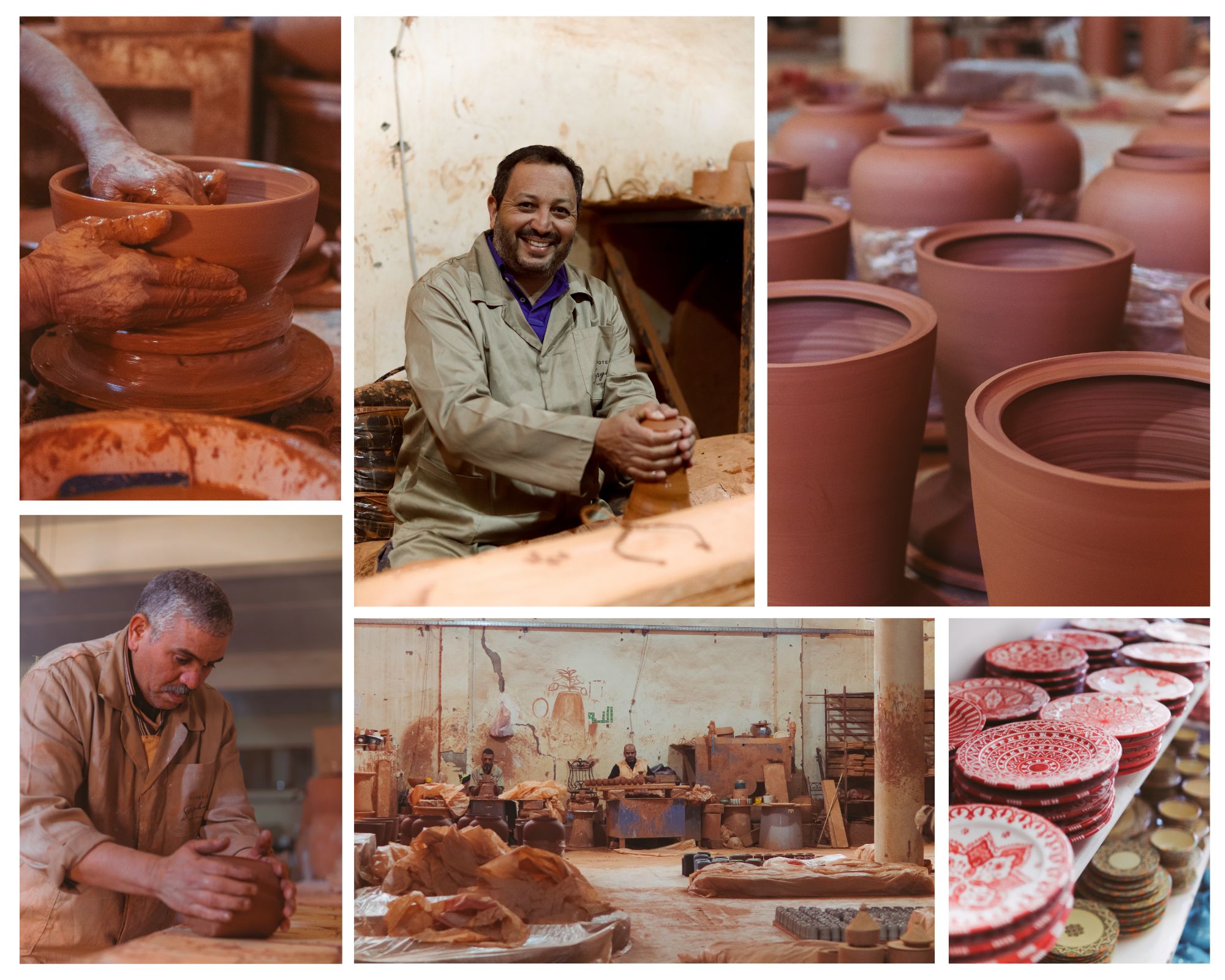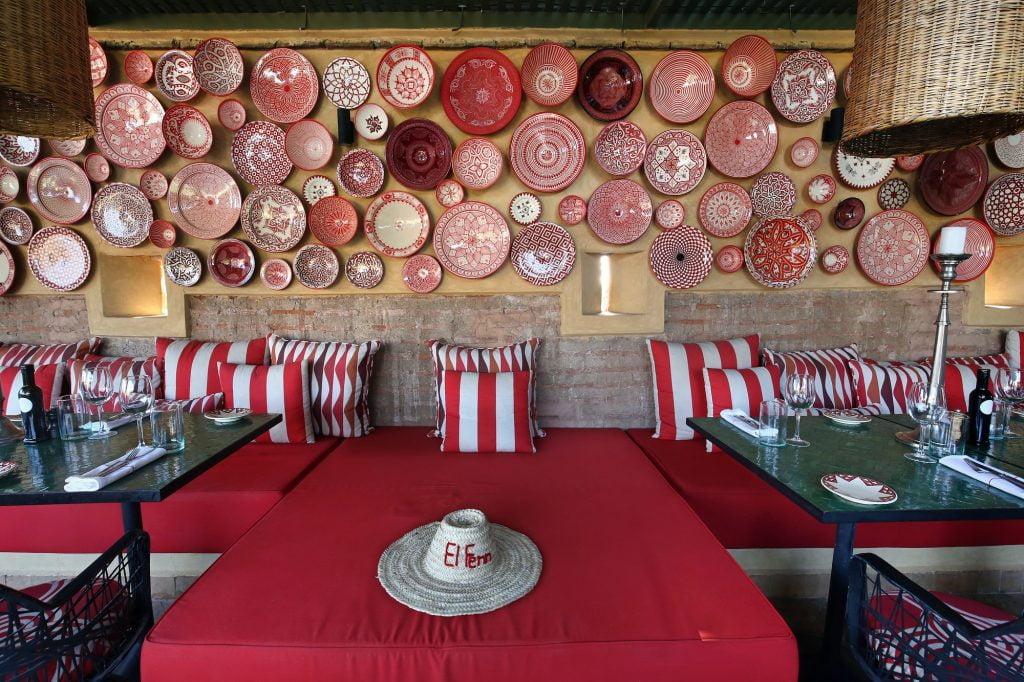
The Artisans of Morocco – Pottery Serghini
The Serghini family has been making ceramics for almost two hundred years. We visited their workshop.
When Mohammed Serghini threw his first pots in 1832, he had no idea that almost two hundred years later his descendants would be carrying on his work. Back then, Serghini Pottery was based in Fez. A few decades later, the family business moved to Safi to be part of the growing artisanal pottery movement there.
But eight generations later, the company now also works out of a huge warehouse in Sidi Ghanem, the industrial zone on the outskirts of Marrakech. And it’s here that Mohammed’s great, great, great, great, great, great grandson Younes is continuing his family legacy.

The huge space is always alive with activity. On one side of the warehouse, air is pressed by hand out of huge lumps of clay – extracted in Safi, as well as Spain and Italy – before it’s rolled, divided and delivered to potters sitting at wheels around the fringes of the room.
Working quietly, quickly but above all flawlessly, the artisans then shape the clay by hand into everything from serving bowls and giant garden urns to incredibly ornate customised pieces. In the rare instances of human error, the clay is reshaped, reworked and made perfect again.
But this is just the first step in a time-rich process.

After the pieces are dried for 48 hours, the potter then works on them again to smooth out any tiny imperfections before they are fired at over 1000C for anything between 48 and 72 hours. The pieces are then left to dry for another day before being hand-painted by craftsmen and women. No stencils are used, no patterns created by machines. Instead the artisans free-paint the pieces using nature, Morocco’s cultural heritage and their own personal history as inspirations. The most complex pieces can take up to 12 months to fully complete, going through multiple firings.
In a world of cheap mass-produced pottery, Serghini creates work that truly endures. And it’s this – plus their innovation and creativity – that’s earned them a worldwide reputation.

Today, Serghini artisans can customise in any size or colour, and do everything from gilt pieces using techniques dating back to the 12th century to creating logic-defying modern, graphic shapes.
‘My family has always said that the sons of ceramicists are born with 50% of the knowledge in their blood,’ says Younes. ‘And the rest you learn.’
Today a Serghini daughter also sits at the helm of the business alongside her brother. While Youness takes charge of production and administration, his sister Aziza looks after marketing the business as they take it into the modern age.
And it’s their father Ahmed’s legacy in particular that they are safeguarding.
Taking over the company in the 1960’s when an economic crisis forced many pottery businesses to close, Youness was determined to preserve ceramic skills for future generations. Over the next forty years, he trained thousands of artisans in traditional techniques, as well as innovating and sharing his expertise around the world – forging the appreciation of Moroccan pottery as a key part of the country’s cultural heritage and earning his pieces a place in museum collections, including that of the British Museum.

In addition to safeguarding traditional techniques, Ahmed was also passionate about the artistry involved in hand decoration because for him pottery was an expression of the creative and emotional inner life of the potter.
‘We have to be passionate,’ he once said. ‘We have to love what we do.’
Ahmed’s work won him numerous international awards. And as Younes watched him work, he knew as a child that he wanted to follow his path.
‘I started learning very young when I would visit my father on weekends and holidays,’ he says. ‘And I never doubted that I wanted to carry on the traditions and history of my family. It’s a privilege to be able to do so.’
After training in ceramic design in Limoges, Younes took over Serghini Pottery in 2002 and was named Morocco’s best artisan in 2016. Today, he and Aziza are taking their business internationally, sending customised Serghini pottery all over the world as well as producing homeware and garden ranges. We worked with them at El Fenn to produce the stunning plate installation in our rooftop restaurant and their pieces are also available in our boutique.

But what of the next generation of the family? Any worries that the ninth generation might not want to follow in such traditional footsteps?
Youness smiled as he pours mint tea in the workshop.
‘We don’t tell our children that they must work in the business,’ he says. ‘But we know it will come.’


